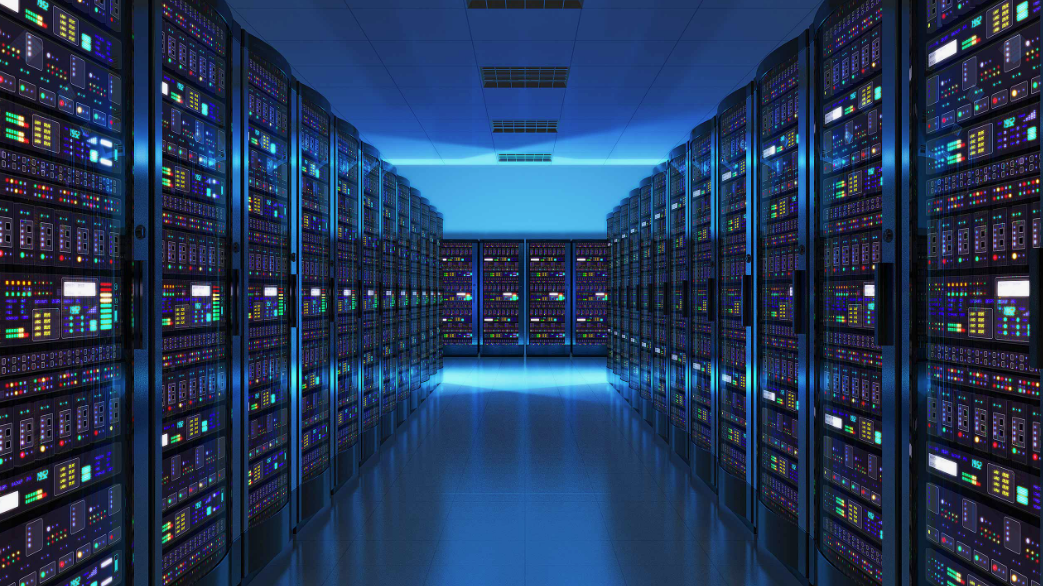What Are the Key Practices for Sustainable Data Centers?

In the digital world, data centers form the backbone of the Internet. It powers everything from cloud storage to streaming services. The organizations responsible for these structures must incorporate sustainable practices into both their building and operational processes.
You can strike a balance between environmental responsibility and the growing reliance on data centers by implementing.
- Energy-efficient cooling systems
- Using renewable energy sources
- Choosing sustainable building materials.
Analysts predict that hyperscale data center will expand by 50% by 2026 due to the high demand for data processing and storage.
This article explores the value of sustainability in data centers, emphasizing eco-friendly procedures and cutting-edge tools that help lessen their environmental impact.
What Are the Environmental Impacts of Data Center?
Data centers are essential to our digital lives because of the power of social media platforms, streaming services, online banking, and communications. These facilities use a tremendous amount of energy, even though they are necessary.
According to recent research, data centers use roughly 1% of the electricity produced worldwide; however, some projections suggest that by 2030, this number could increase to 3%. Furthermore, a significant portion of them contribute to greenhouse gas emissions due to their reliance on non-renewable energy sources.
Key Innovative Practices Driving Green and Sustainable Data Center
The following are a few of the key developments influencing the emergence of sustainable data centers:
1. Energy-efficiency strategies
Data centers use a tremendous amount of energy to power and cool numerous servers. Due to their common inefficiencies, conventional data centers lose a lot of energy. On the other hand, contemporary data centers use a variety of techniques to improve energy efficiency.
- Virtualization: One such tactic is virtualization, which allows numerous virtual computers to run on a single physical server, hence lowering the number of servers required. This results in a significant reduction in energy consumption as well as hardware expenditures.
- High-tech cooling systems: They are necessary to maintain energy efficiency. Techniques that are becoming more popular include liquid cooling, which transfers heat more efficiently than air, and free cooling, which uses the surrounding air.
2. Proper waste management in the data center
Data centers produce a large amount of electronic garbage, or e-waste, due to old or malfunctioning gear. So, appropriate waste management strategies are essential to minimizing the harmful environmental effects of e-waste. Materials can be reused or disposed of safely with the support of recycling programs and IT equipment lifecycle management.
The goal of zero waste efforts is to reduce, recycle, and reuse garbage to keep it all out of landfills. Implementing such projects requires collaboration between vendors, customers, and data center operators.
3. Integration of renewable energy resources
One of the biggest innovations in sustainable data centers is the integration of renewable energy sources. Many data centers are now powered by wind, solar, and hydropower, which reduces their carbon footprint and reliance on fossil fuels.
Tech behemoths like Facebook, Google, and Microsoft have committed to running their data centers entirely on renewable energy.
- These companies are investing in renewable energy projects like wind farms and solar arrays to power their data centers.
- They are even constructing their infrastructure for renewable energy in certain instances.
For instance, Google plans to power all of its data centers entirely carbon-free by 2030 and has been carbon-neutral since 2007. Microsoft plans to become carbon neutral by 2030, meaning it will take in more carbon dioxide from the atmosphere than it emits.
4. Sustainable design and construction
Designing and retrofitting data centers sustainably requires adhering to green building standards like
- Building Research Establishment Environmental Assessment Method (BREEAM)
- Leadership in Energy and Environmental Design (LEED).
Buildings that hold these certificates are guaranteed to adhere to strict environmental performance criteria.
Modular data center designs are becoming more popular because of their effectiveness and adaptability. These designs minimize the environmental effect of construction and allow for scalable growth utilizing sustainable materials.
Upgrading infrastructure to more energy-efficient systems and incorporating renewable energy sources are key components in retrofitting existing data centers to increase sustainability.
5. AI and machine learning to prevent hardware failure
Technologies based on artificial intelligence (AI) and machine learning (ML) can evaluate enormous volumes of data in real time and make adjustments to maximize energy efficiency.
For example, AI-driven systems that monitor a data center’s temperature, ventilation, and power consumption can automatically adjust cooling and power distribution to minimize waste.
- For instance, Google’s DeepMind AI has optimized the energy efficiency of its data centers, resulting in a 40% decrease in the amount of energy required for cooling.
Machine learning algorithms enable predictive maintenance and can also determine the likelihood of hardware failure. Data centers can prolong the life of their equipment and prevent energy-wasting outages by resolving possible issues before they become problems.
6. Advanced cooling system
Modern air cooling solutions are required since traditional air cooling systems are frequently ineffective. Free cooling, which utilizes outside air, is a cost-effective method for data centers in colder climates. In contrast, liquid cooling transfers heat away from server more effectively than air by using water or other coolants.
Another inventive tactic is to reuse waste heat. Some data centers are located near residential areas or commercial spaces where excess heat can be used to heat buildings or operations to maximize overall energy efficiency.
7. Integration of energy storage solutions
The integration of energy storage solutions, like advanced battery systems, is helping data centers become more sustainable. It balances energy usage and reduces reliance on non-renewable energy sources during periods of peak demand.
For example, data centers use Tesla’s Powerpack and Megapack battery systems to store renewable energy generated during off-peak hours for use during peak demand. This reduces the need for grid energy since it is typically generated using fossil fuels.
In a Nutshell
The future of sustainable data centers is bright, despite these obstacles. Adopting greener techniques is becoming more popular as technology develops and environmental issues gain urgency.
The data center sector can make a significant contribution to creating a more robust and sustainable digital future by embracing innovation and making investments in sustainable solutions.
More businesses committing to sustainability could lead to significant environmental benefits while maintaining the essential services that power our digital lives.










